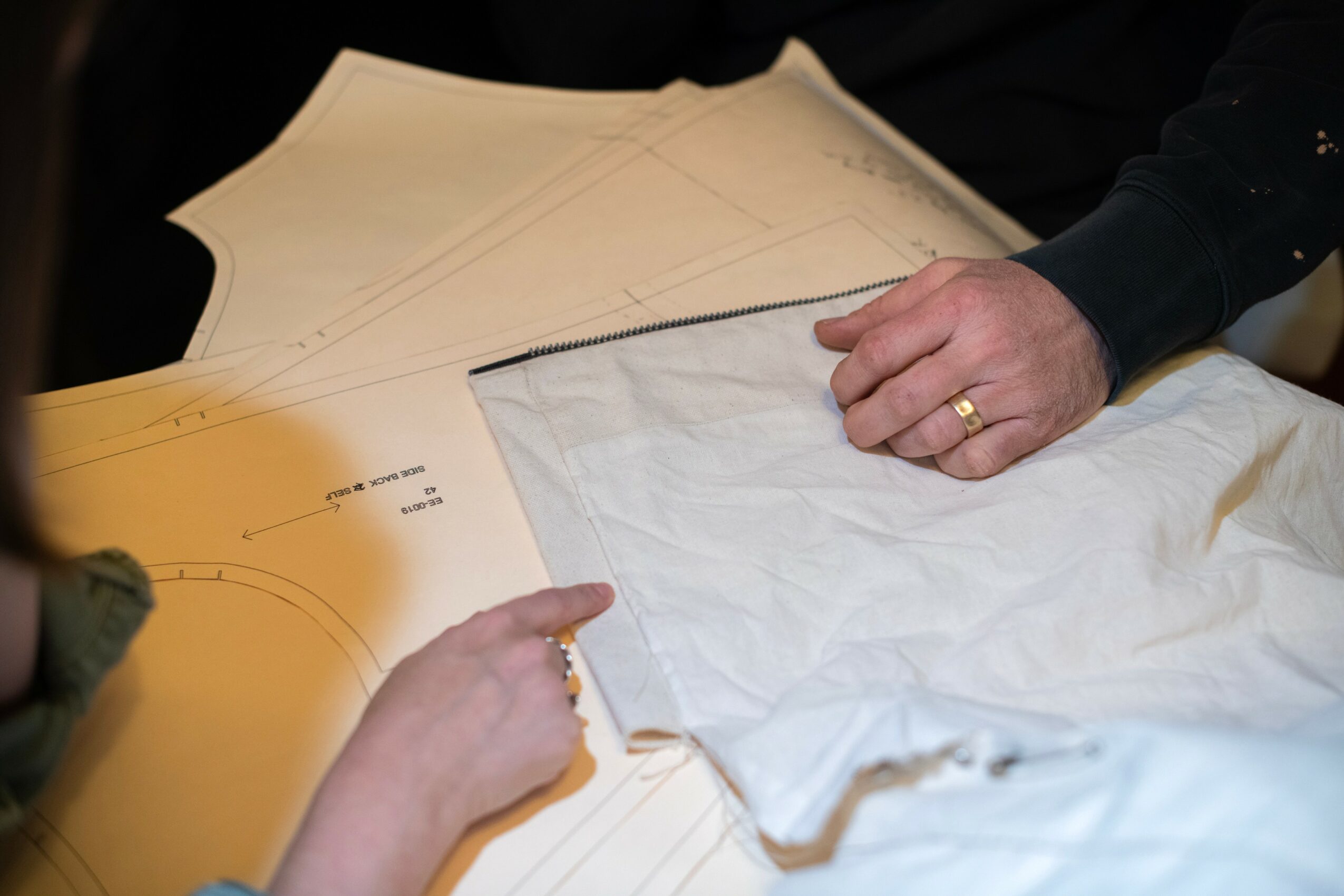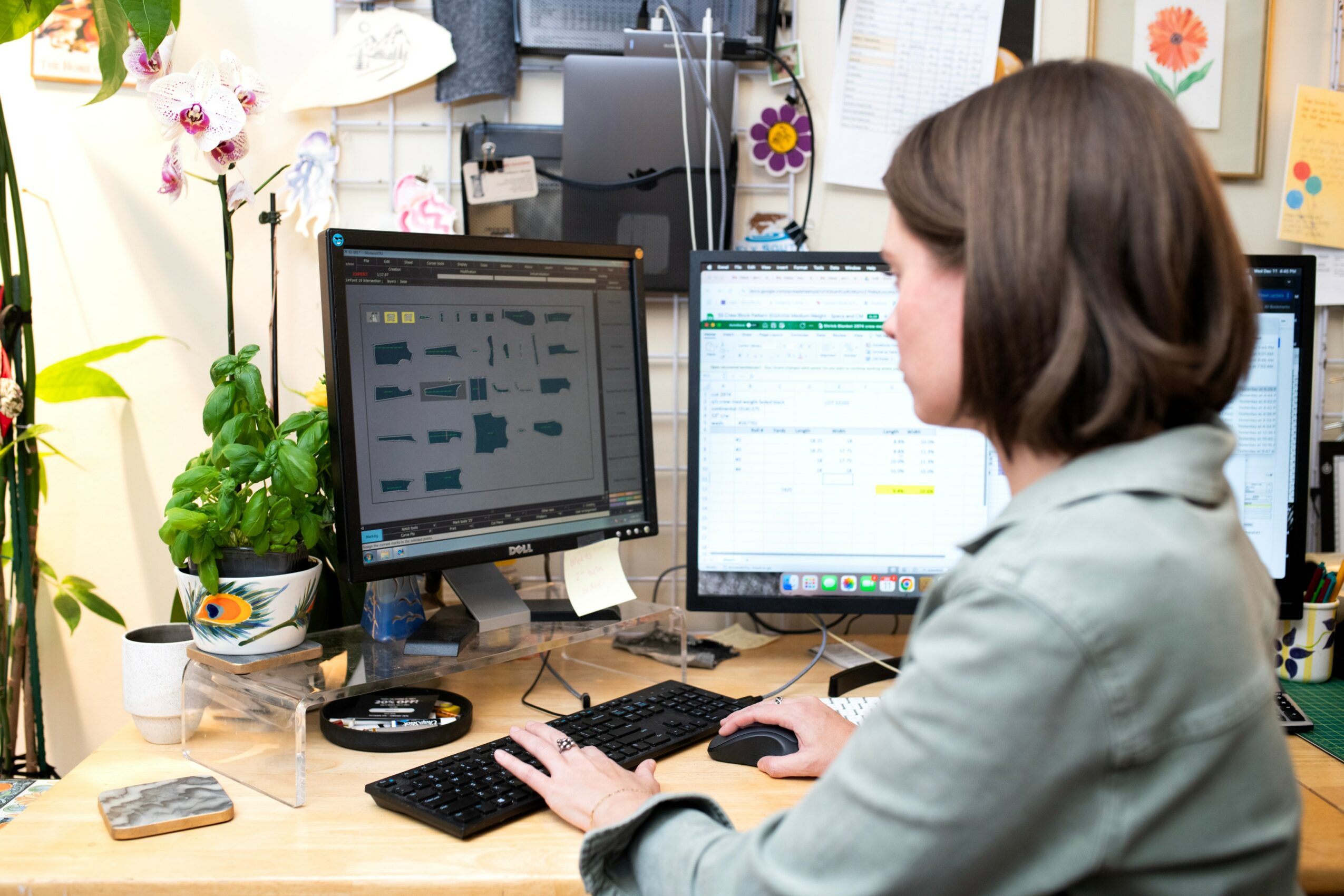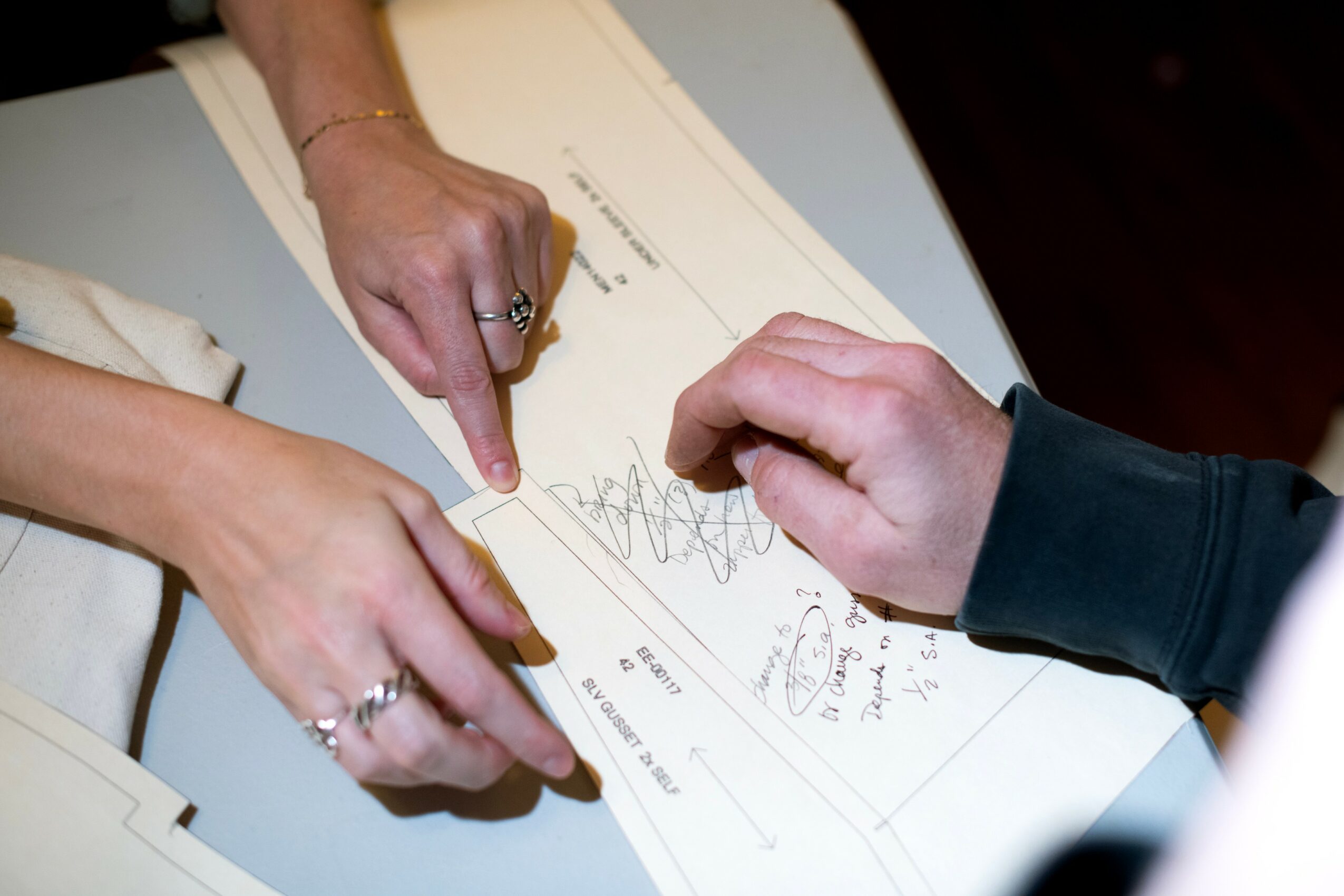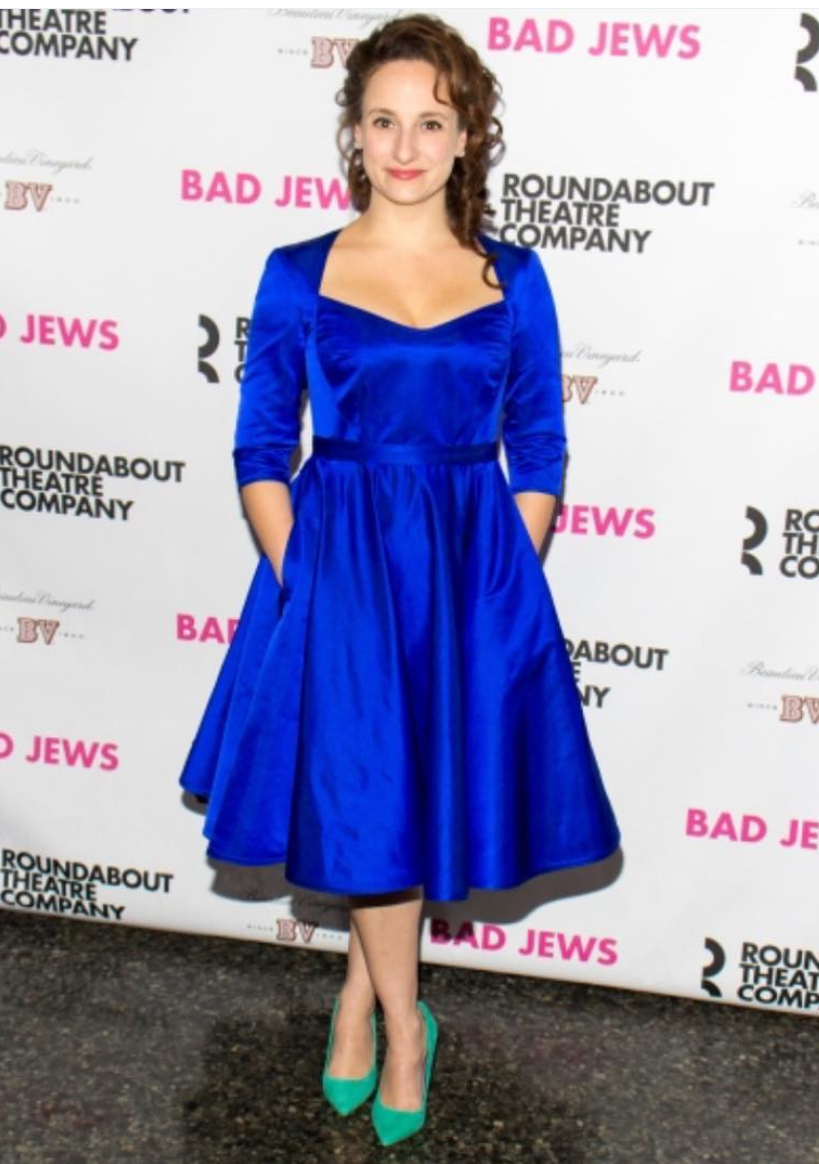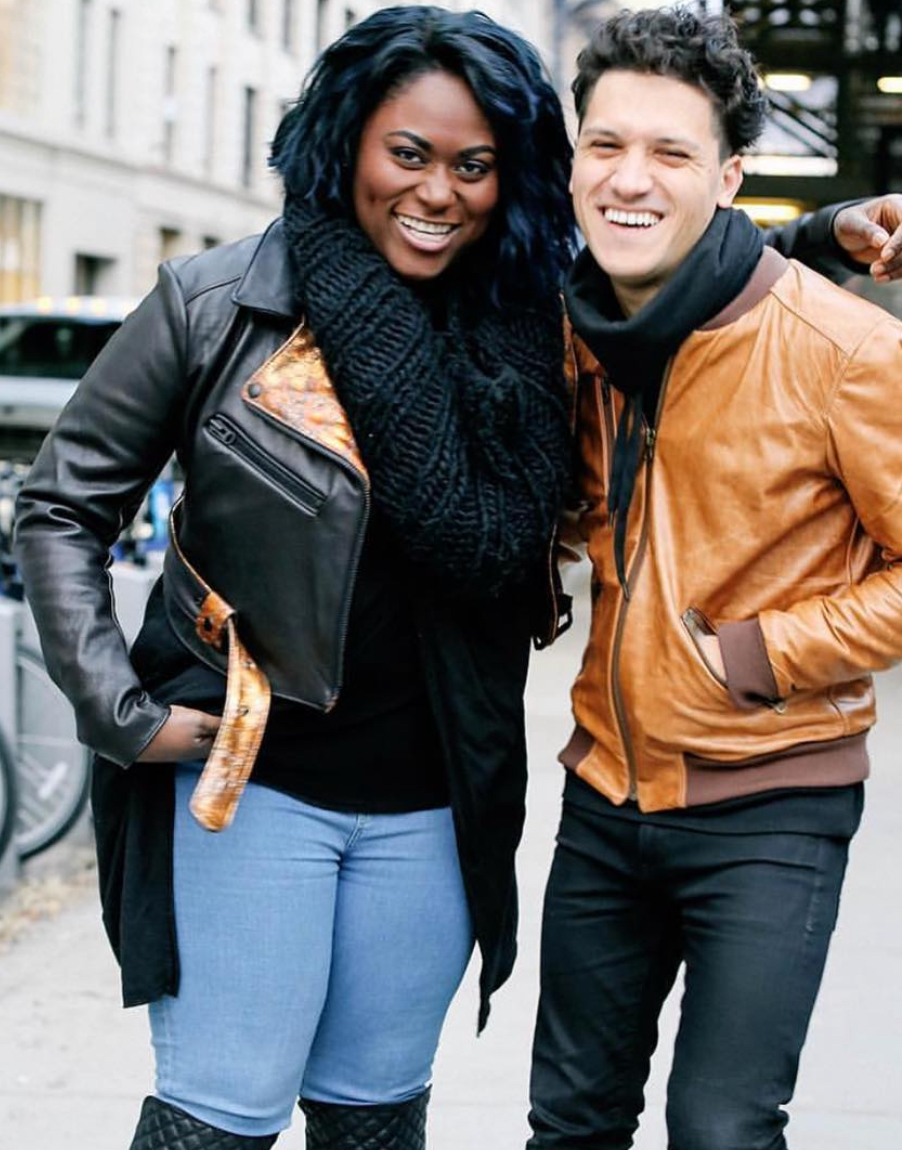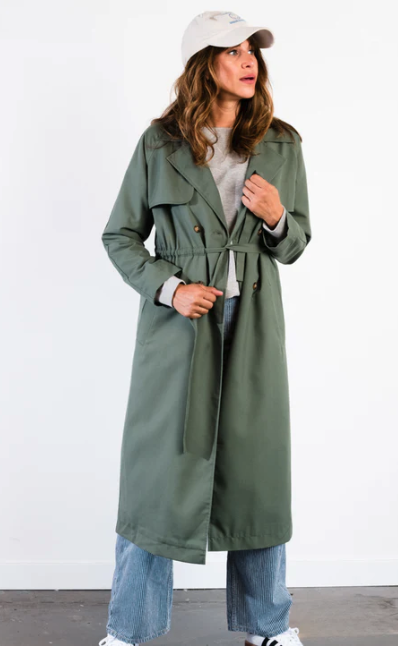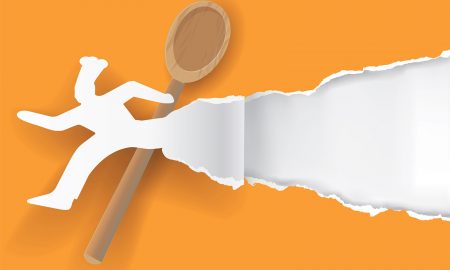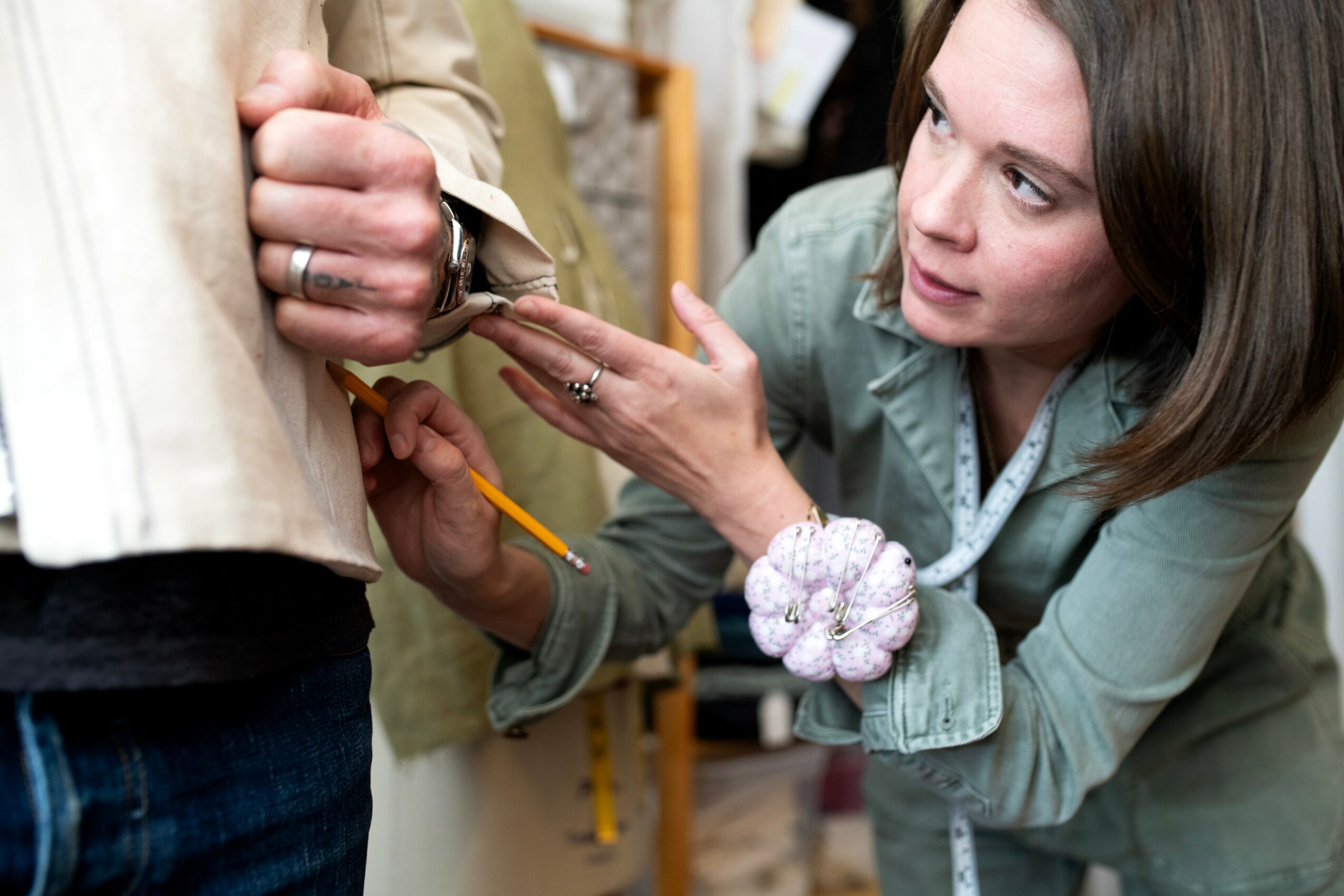

Annie Masarie shared their story and experiences with us recently and you can find our conversation below.
Hi Annie, thank you so much for taking time out of your busy day to share your story, experiences and insights with our readers. Let’s jump right in with an interesting one: Who are you learning from right now?
Right now, I’m learning from everyone around me—clients, employees, colleagues, friends, and family. We work with such a diverse range of clients, from those just entering the industry to others with over 40 years of experience, and that gives me a constant opportunity to see how different people form ideas, make decisions, and set expectations.
My team teaches me every day—whether it’s new technology, leadership lessons, or fresh approaches to our services. I also collaborate with some of the top professionals in the industry: pattern makers, graders, sewers, designers, production managers—you name it. Being surrounded by that level of talent pushes me to keep evolving.
Outside of work, I continue to learn from my friends and family. Their support, perspective, and the way they lead their own lives help shape mine. I’m always open to new ideas, and I actively seek out feedback and advice wherever I can find it.
Can you briefly introduce yourself and share what makes you or your brand unique?
After starting my career in New York’s Garment District—working in grading, marking, and as an in-house pattern maker—I eventually branched out on my own as a freelance patternmaker. Nearly a decade later, I hired my first team member and officially launched Masarie Patterns.
Today, we work with a wide range of clients—from large, established brands to small startups—and offer a full suite of development services including pattern drafting, technical design, grading, sampling, and sourcing.
What makes us unique is our commitment to supporting those who are new to the fashion industry. We believe in building a collaborative, approachable environment where clients feel empowered throughout the development process. There’s nothing more rewarding than helping someone bring their vision to life and watching their product hit the market.
Amazing, so let’s take a moment to go back in time. What relationship most shaped how you see yourself?
The relationship that has most shaped how I see myself is the one I have with my stepmother. Thanks to my incredible father, she came into my life during my early adult years, and we quickly formed a close and meaningful bond.
She’s a highly respected leader in the fields of leadership development and executive coaching, and in 2014, we both happened to begin the journey of starting our own businesses. Through supporting each other, celebrating milestones, and brainstorming together, I began to see my own growth—both personally and professionally—through her eyes.
She’s the first person I call when I’m uncertain about my next step, and someone I can always count on to lift me up when I stumble. Her belief in me has helped me feel more confident and capable than ever before, and I’m incredibly grateful for the impact she’s had on how I view myself and my potential.
What did suffering teach you that success never could?
Suffering taught me how to accept help and truly feel my emotions—lessons that success could never offer. My instinct had always been to put on a brave face and pretend everything was fine. I was so self-conscious about showing signs of struggle—like puffy eyes or a low mood—that I ended up hiding not just from others, but from myself.
In 2019, when my longtime partner passed away unexpectedly, that was a kind of suffering I simply couldn’t mask. For the first time, I let my guard down. I allowed myself to be real—with my family, my friends, even my coworkers. And in that vulnerability, I learned something life-changing: the people who love you, love all of you, even when you’re hurting. I didn’t have to hide anymore.
That experience showed me the strength in honesty, the power of connection, and that I’m not alone—even in my darkest moments.
I think our readers would appreciate hearing more about your values and what you think matters in life and career, etc. So our next question is along those lines. What are the biggest lies your industry tells itself?
In my opinion, one of the biggest lies in the fashion industry is the idea of transparency. Many brands claim to uphold fair labor practices and pay living wages, yet often can’t actually guarantee these claims. This is especially true with overseas manufacturing, where supply chains become complex and difficult to trace.
In many cases, the manufacturers that brands work with are not the ones actually producing the goods—they act more like intermediaries, subcontracting work to other facilities. On one hand, this system can be helpful: it reduces language barriers, streamlines communication, and gives brands access to a broader range of production capabilities. But it also means that brands often have no direct insight into the working conditions or labor practices at the actual production sites.
This becomes particularly problematic when a brand’s ethical values are a major part of its marketing. As these companies grow and require higher order quantities, they’re forced to scale up and work with larger or multiple manufacturers—making it even harder to maintain the “insider view” they once claimed to have.
Rather than risk their reputation, some brands choose to accept verbal reassurances about fair practices without requiring proof or conducting real investigations. This allows them to continue marketing themselves as transparent and ethical without having to face the uncomfortable truth—or take full responsibility.
Okay, so before we go, let’s tackle one more area. What do you understand deeply that most people don’t?
What I understand deeply—something many people overlook—is that pattern making will never be fully automated.
While many industry software tools promise automated made-to-measure adjustments or even full pattern generation, the results are still far inferior to the work of a skilled pattern cutter. Pattern making isn’t just a mathematical process—it’s an art. It relies on principles, formulas, and guidelines, yes, but it also demands experience, intuition, and countless judgment calls.
There are an endless number of variables that affect how a pattern should be constructed: fabric behavior, construction methods, customer preferences, shrinkage percentages, and more. For example, if a shirt pattern needs to be adjusted to account for 10% shrinkage in length and 2% in width, the sleeve may no longer fit properly into the armhole. At that point, a machine can’t reliably tell you what to do next. Should you increase the bicep width? Raise the sleeve cap? Reduce the armhole? Or adjust a combination of all three?
These aren’t decisions that can be made in isolation—they require context: Who is the customer? What’s the intended fit? What fabric is being used? How will the garment be washed and constructed? A human pattern maker can take all of this into account and make a call that balances both technical accuracy and aesthetic intention.
Automation can support pattern makers, but it won’t replace them. Not fully. The craft is too complex—and too human—for that.
Contact Info:
- Website: https://www.masariepatterns.com
- Instagram: @masariepatterns
- Linkedin: https://www.linkedin.com/in/annie-masarie-30035a2b/
